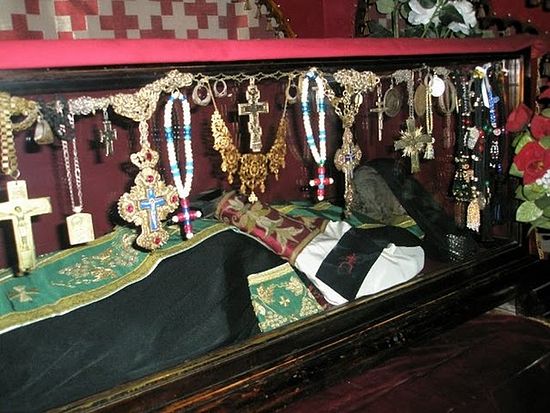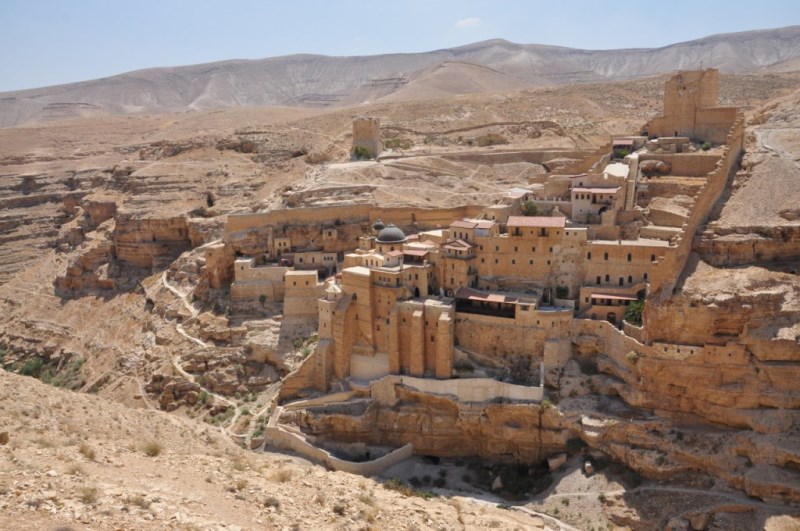The Monastery of Saint Savva the Sanctified (Mar Saba) was founded by Saint Savva the Sanctified in 485, and even then it was called the Great Lavra. The Orthodox Monastery of Saint Savva the Sanctified is the most significant monastery of the Judean Desert. It is located in the heart of the desert between Bethlehem and the Dead Sea. It was erected on the steep west side of the Kedron Valley.
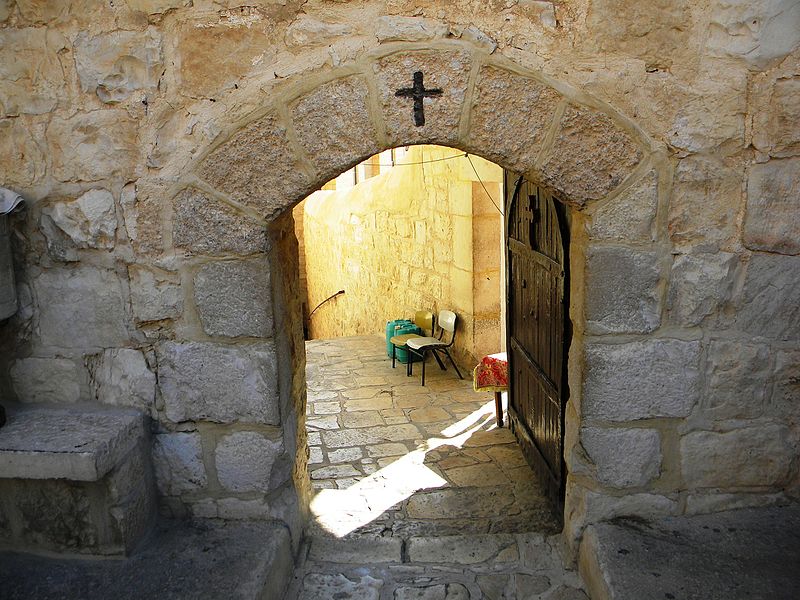
The Saint Savva Lavra is one of the oldest and most important monasteries of the Orthodox Church. Its history is over 1,500 years long.
Saint Savva the Sanctified became a monk at the age of eight in his native Cappadocia, Asia Minor. At the age of eighteen, he came to the Holy Land, where he became an obedient to St. Jevtimius the Great. In 478, he arrives at the site of the present-day Lavra after the revelation of the angel of the Lord, and this is where the organization of monastic life begins.
As the first small church, called Theoctistos (made up of God), which was dedicated to St. Nicholas, was not sufficient for the needs of the fraternity, St. Sava erected a large church, today’s catholicon of the monastery, dedicated to the Annunciation of the Blessed Virgin. This Lavre Cathedral was consecrated in 502 AD. The great sanctuaries are also the cave and the anchoress of the great defender and teacher of orthodoxy of Saint John Damascus, the cave of Saint Savva, the high tower-pyrgos from the time of Emperor Justinian.
Saint Savva The Sanctified by his holiness became known throughout the world. He died in 532. Inside the church, a glass kiwata was installed with the intact relics of Saint Savva the Sanctified (438 – 532), which were successfully returned, after many centuries, in 1965.
The monastery has experienced a variety of enemy attacks fourteen times in its history.
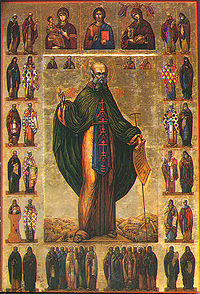
Monastic life and Savaiti
Saint Savva the Sanctified established a sublime monastic feat, which he inherited from Saint Jevtimius the Great, and so did Saint Stephen the Miracle Worker. Monastic life in the monastery of Saint Savva is very strict. The monastery lives in Byzantine time, which means that twelve hours of the day always coincides with the sunset. Worship begins an hour or two after midnight, lasts six to seven hours each day, and in Lent, they last up to ten hours.
They eat at the monastery only once a day, except on Saturdays, Sundays and major holidays, when two tables are set.
After St. Savva, Lavra is best known for St. John of Damascus, who lived in the mid-eighth century, being at that time the greatest theologian, philosopher, and hymnologist of the entire Christian empire. Lavra is also known for Saint Michael Singelos and two icon worshipers Saint Theophanes and Theodore. The three invited the Theodore Stolpnik to Constantinople to defend Orthodoxy from the iconoclastic heresy.
The Savaites are known for always being defenders of the faith, not only in the Holy Land but also beyond. Many known and unknown Savaites were martyred during the Persians in 614 AD, while others were also killed during the Arab robbery and devastation of 796 AD.
Russian abbot Danilo on his visit to the Holy Land 1106-1107. In the year 2010, he writes that he was praying in front of the relics of the five great saints in Lavra, and that there was a fragrant scent in the monastery on all sides: Saint John of Damascus, John of Ishista, Theodore of Edes, the Reverend Martyr Michael and Saint Aphrodisius.v
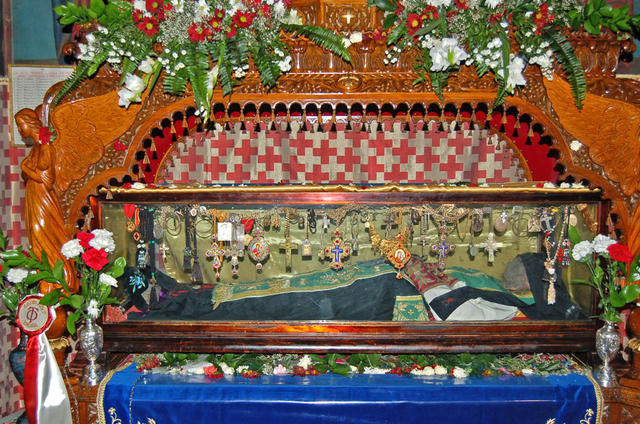
Tipik
Of particular importance to the Orthodox Church is the Tipic of Saint Savva the Sanctified, which established worship and order in the Orthodox Church. The tipik of Saint Savva was held very long after his death. He was adhered to by many other great fathers – St. Hariton, Jevtimius the Great, Theoctist, Sophronius, and John Damascus. From the Lavra of Saint Sava, this tipik extended to Constantinople and the Holy Mount Athos, and it had a great influence on the life of the study monasteries in Constantinople.
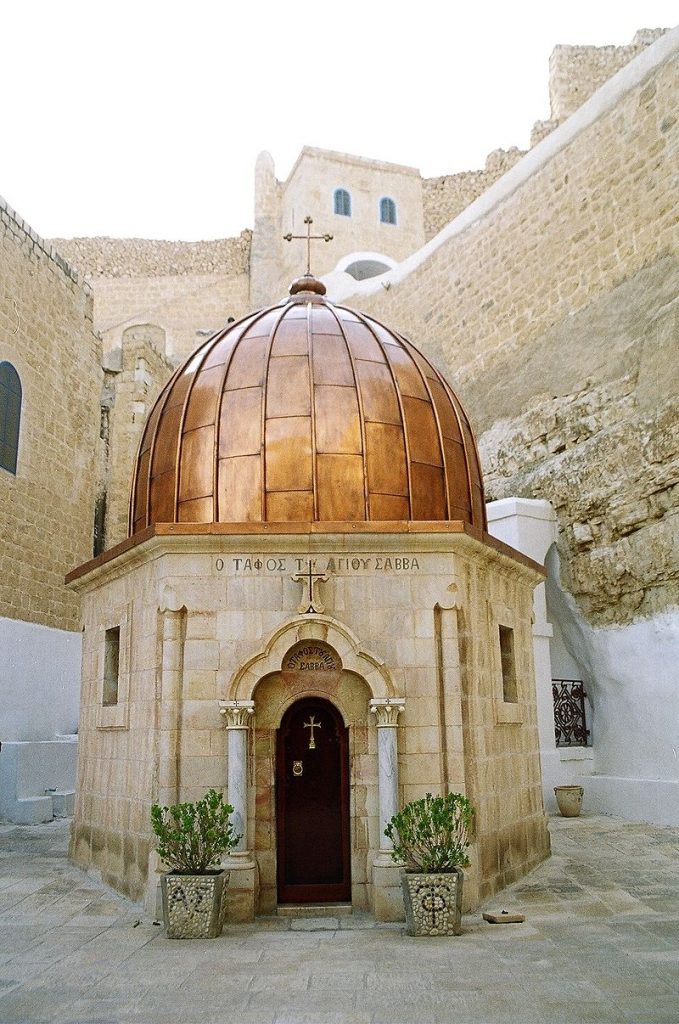
Monastery today
The monastery of Saint Savva the Sanctified is still today a great shrine, attended by devotees from all over the world, and is a great Orthodox shrine. It is located on the steep side of the Kedron Valley, and the environment is scarce with water and vegetation. Only in Lavra are there water sources, while the whole surroundings of the monastery are waterless and this water is used by both monks and devotees. In the desert around the Lavra, high temperatures are 45 to 50 degrees, and rain very rarely falls, maybe three or four times a year. At a time when it is raining, monks collect rainwater and later use it for various monastery needs. In Lavra, the water supply is truly in the hands of God. No electricity is used in the monastery, except in the case of some repairs and construction work.
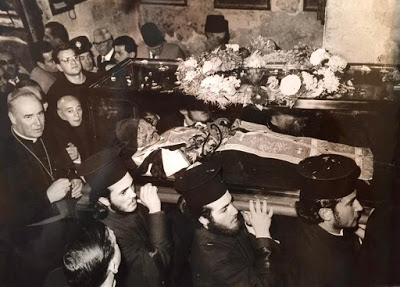
Return St. Savva’s relics to the Holy Land from Venice
St. Savvas, while yet alive, foretold that his relics would be taken from the monastery but later returned, and during the first Crusade (1096-1099), his relics were in fact stolen and taken to Venice. There they would lay (we won’t say “rest”) for 900 years before finally returning to the Holy Land. Abbot Seraphim of the Lavra of St. Savva the Sanctified explained the Roman Catholic pope’s sudden willingness to return St. Savva’s relics to their rightful place after nine centuries.
When Pope John XXIII was ruling Rome, St. Savva began appearing to him and telling him that he wanted to return to his monastery. Although these appearances happened many times, the Pope nevertheless went to his grave without fulfilling St. Savva’s request. But the saint from Cappodocia was determined, and appeared to the pope’s successor, Paul VI. In case this was not enough, the saint began rattling the glass of his reliquary and frightening the guards and Latin monks.
Meanwhile, in the Holy Land, a rainbow appeared every day to the east of the Lavra for a month until the relics returned, as a sign.
Although a number of ecumenical gestures were being made by Rome to the Orthodox at the time, some had doubts that the Latins were really returning St. Savva’s authentic relics after so many years. It seemed too good to be true. However, when Fr. Seraphim came to Venice to receive the relics, he carefully examined them, and saw that one eye was missing. Since during the saint’s lifetime the Monophosytes had put out his eye, this was a satisfactory verification. But there would also later be a series of miraculous appearances by the saint to different people in the Holy Land just before his arrival and during his stay in the Jerusalem Church of the Resurrection, which left no doubt that St. Savvas had truly returned home.
The relics of St. Savva the Sanctified returned to the Lavra on October 10, 1965, and many miracles wrought by him have since been recorded.
